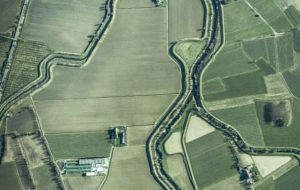WELCOME
Be Bold. Make the Change. Have a meaningful Impact.
#sustainability #entrepreneurship #renewableenergy #innovation

Be Bold. Make the Change. Have a meaningful Impact.
#sustainability #entrepreneurship #renewableenergy #innovation
Cleantech Geek is an informative platform that sits in the intersection of sustainability and entrepreneurship. Combining articles, video and podcasts we intent to provide the stage for creative thinking and constructive discussions.
Written by Wattcrop team
The financial impacts of the climate crisis are far-reaching and wide-ranging, with the potential to affect virtually every aspect of the global economy. The Intergovernmental Panel on Climate Change (IPCC) has estimated that the total costs of the climate crisis could reach as high as 5% of global GDP each year by the end of the century, with the majority of these costs being borne by lower-income countries and communities.
One of the most immediate financial impacts of the climate crisis is the increasing cost of energy. As temperatures rise, demand for air conditioning and other forms of cooling increases, leading to higher energy costs for individuals and businesses. In the United States, for example, the number of days per year with extreme heat is expected to increase by 50% or more by mid-century, which could lead to a significant increase in energy demand and costs. At the same time, the frequency and severity of natural disasters, such as hurricanes, earthquakes, and wildfires, are also on the rise, which can disrupt energy production and distribution, leading to further increases in energy prices.
Like all types of projects, renewable energy projects follow a specific process. There are 4 main stages, each of them requiring its own specialised staff. These are the stages of pre-development, development, construction and finally, project management and maintenance.
Stage 1
 First and very important, is the pre-development stage. This is that phase of the projects in which, after confirming the availability of the grid in an area, the people appointed by the company to find land, look for suitable fields and large pieces of land for the development of photovoltaic and wind projects. Once the necessary land is found, then the company’s experienced team of engineers undertake the necessary inspections. This involves environmental, topographical and archaeological checks in order to confirm the suitability of the land. The last step in the pre-development stage is the legal control on each private or public piece of land.
First and very important, is the pre-development stage. This is that phase of the projects in which, after confirming the availability of the grid in an area, the people appointed by the company to find land, look for suitable fields and large pieces of land for the development of photovoltaic and wind projects. Once the necessary land is found, then the company’s experienced team of engineers undertake the necessary inspections. This involves environmental, topographical and archaeological checks in order to confirm the suitability of the land. The last step in the pre-development stage is the legal control on each private or public piece of land.
Πρώτη δημοσίευση: energypress
του Υπάτιου Μωυσιάδη
Το 2022 φεύγει αφήνοντας ένα τοπίο ρευστότητας και αβεβαιότητας. Τόσο η ενεργειακή κρίση η οποία επιδεινώθηκε λόγου του πολέμου στην Ουκρανία όσο και η κλιματική κρίση της οποίας η επιπτώσεις είναι πλέον οφθαλμοφανείς έχουν φέρει στην επιφάνεια τις χρόνιες ελλείψεις και παθογένειες στο χώρο της Ενέργειας τόσο σε Εθνικό όσο και σε Ευρωπαϊκό επίπεδο. Το τρίπτυχο της ενέργειας είναι η Βιωσιμότητα της επένδυσης και της τεχνολογίας με γνώμονα την πράσινη μετάβαση, η Εξασφάλιση προσιτών τιμών και η Ασφάλεια παροχής. Ποια είναι όμως τα συνθετικά στοιχεία στην Αγορά Ενέργειας;
Written by Vaggelis Ioannou, electrical engineer at Wattcrop.
Wind resource assessment is the most time-consuming procedure in majority of wind projects, and it determines the future of a project since it provides valuable data for it such as average wind speed, average wind density energy, Annual Energy Production (AEP), losses and uncertainty associated with AEP. Lack of wind resource or insufficient strictness with respect to technical due diligence during wind resource assessment leads to delayed or rejected projects by financiers. Therefore, a proper wind resource assessment is crucial for the project life and timeline.
Written by Margarita Kyrkou, surveyor and GIS specialist at Wattcrop.
The commercial adoption of drones is growing quickly, and the solar industry is no exception. Drones provide a practical solution for inspecting solar installations, from residential to utility-scale. They can be used to manage the entire design, construction and operation cycle of a system.
Drones support business efforts to avoid hazardous man-hours; reduce costs for maintenance, inspections, and repairs; and maximize energy production. Valuable use cases have been proven across pre-construction, commissioning, and operations & maintenance for not only the PV system itself, but also for surrounding infrastructure like utility lines, substations, and fencing. They are a useful tool as they collect data up to 50 times faster than manual methods and ensure greater safety.
Written by Aggeliki Marinou, environmental specialist at Wattcrop.
The combination of agriculture-livestock farming with photovoltaic parks is widely known abroad and has begun to be incorporated in Greek society, as the need to protect biodiversity, combined with energy efficiency is essential. More specifically, photovoltaic parks can be allocated for grasslands and wildflower meadows, which provide habitats for pollinators, birds and wildlife, as well as for sheep grazing.
The site is suitably landscaped so that animals can live in harmony with photovoltaic panels. The bases of the photovoltaic panels are placed at an appropriate height so as not to obstruct the passage of grazing animals and to ensure that there are passages for the passage of animals through the park.
Cleantech Geek is an informative platform that sits in the intersection of sustainability and entrepreneurship. Combining articles, video and podcasts we intent to provide the stage for creative thinking and constructive discussions.
The transition to a sustainable life style is no longer an academic argument. It’s a necessity that can be realised by the heroes of tomorrow, the entrepreneurs who will to invent miraculous disruptive solutions, making a global meaningful impact.